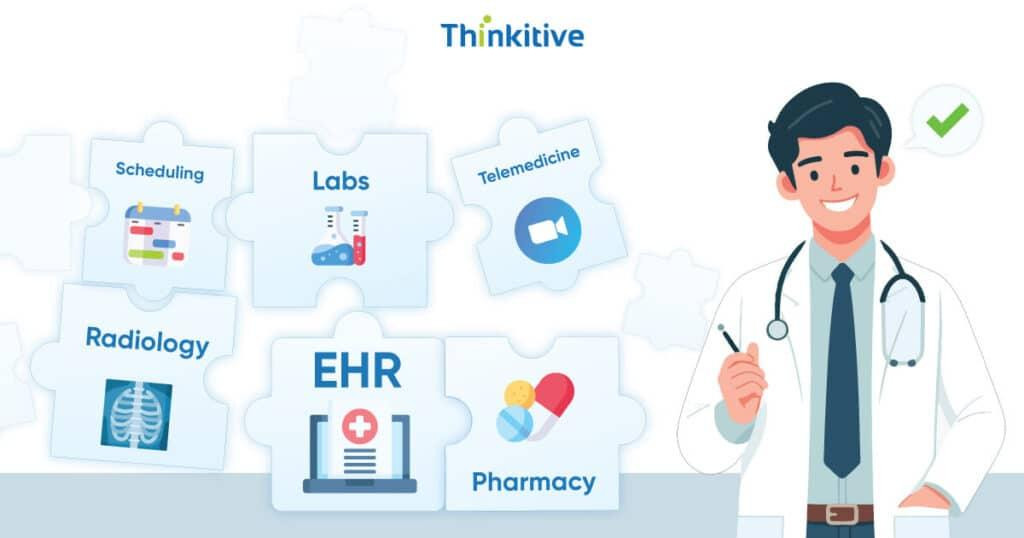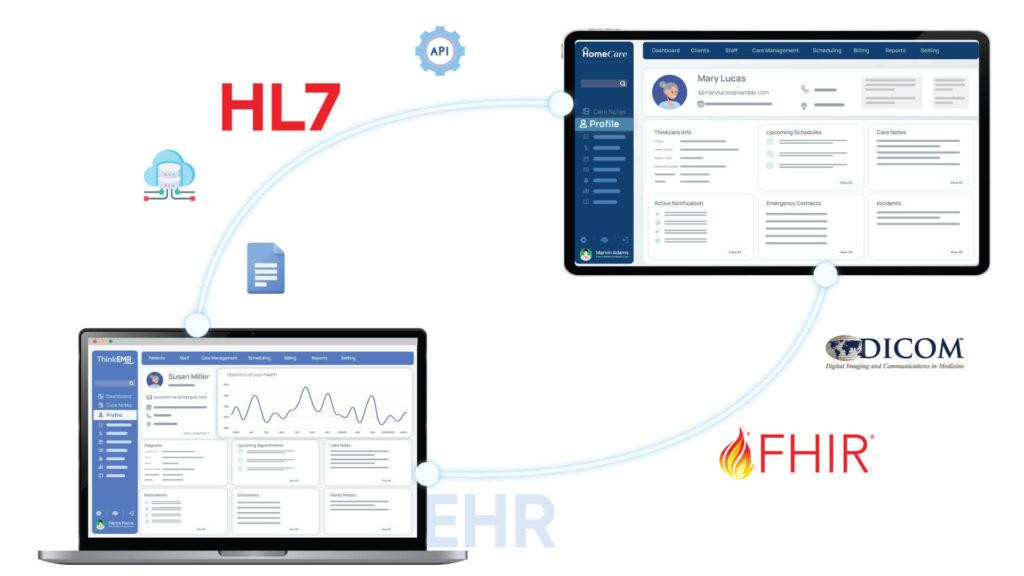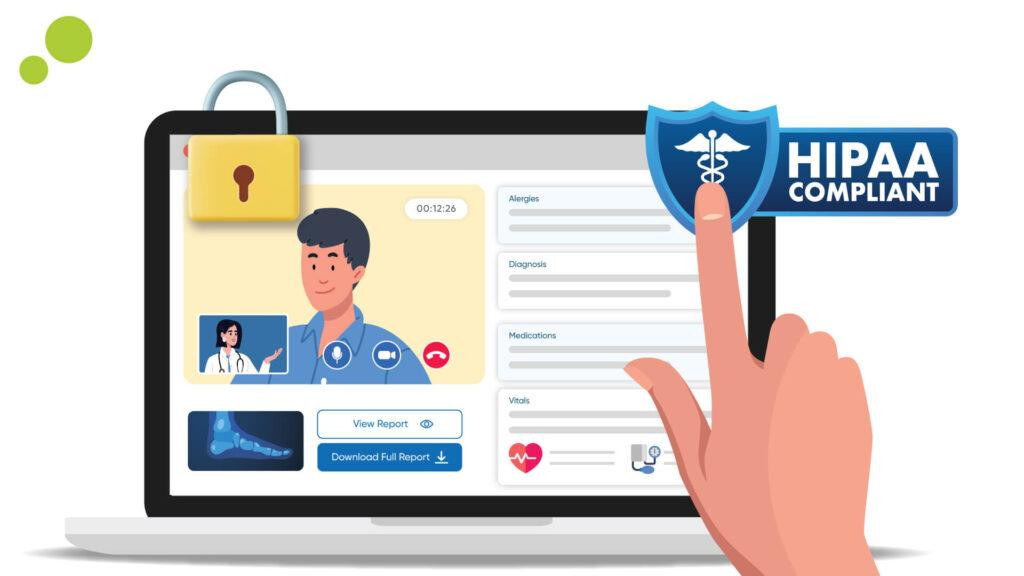
Electronic Health Records has become the epicenter of healthcare delivery in the modern-day healthcare landscape. And while healthcare practices are slowly moving towards creating their own digital healthcare ecosystem with custom healthcare software development, it can be argued that technology is dictating the terms for the future of the healthcare industry.
However, EHR/EMR systems being at the center of the digital healthcare landscape and delivery, the collaboration between one most of the collaborative industry is often dependent on these systems. Furthermore, as the healthcare institutions are moving ahead with their own healthcare software systems the need for Electronic Health Records to be at the center of the healthcare systems has become necessary.
But is it possible for an EHR system to be in sync with a desperate healthcare system?
Well, yes, and it can be done with EHR integration. In a nutshell, EHR integration is the process of connecting EHRs with other software systems so that they can share patient data with each other systems in a more sophisticated and secure way.
And for the future of healthcare landscape, EHR integration will be extremely necessary not only for its benefits but in creation of a well connected healthcare ecosystem.
Having said that, there are lucrative benefits of EHR integration with your custom healthcare software, but it can disrupt your practice if not done right.
In this blog, let’s discuss the benefits of EHR integration and successful EHR integration strategies for most effective care delivery.
Understanding the EHR Integration Landscape

Let’s start by understanding the EHR integration landscape first.
Well, to seamlessly share information between two different healthcare systems which in this case is the EHR system and your healthcare system, interoperability must be achieved. For this one of the best practices for EHR interoperability is to follow some key standards protocols such as HL7 FHIR.
HL7 stands for Health Level 7, and FHIR stands for Fast Healthcare Interoperability Resources. While HL7 is a set of standards that allows the exchange of electronic health information between healthcare providers, FHIR is a standard system for exchanging EHRs across different healthcare software systems.
Other than these HL7 and FHIR, some other standard formats are HL7 v2, DICOM, etc.
Along with this, you must also know some integration methods to develop successful EHR integration strategies. Below are some of the most common methods:
- API-based Integration: APIs are application programming interfaces that are sets of rules and protocols that allow software systems to communicate with each other. Some of the APIs that you are using for this are RESTful APIs, SOAP APIs, etc.
- File-based Integration: Another way you can connect healthcare software systems to exchange information is by using a file-based integration method. This is often used in legacy systems and can be an effective way for connecting your system with EHR systems and initiating transfer of information.
- Database-level Integration: Another way to connect your systems with EHR systems is directly connecting the databases of these systems. By integrating databases, exchanging information becomes much easier and can be done almost instantly.
Along with choosing the common integration method, you should also choose the right integration approach, optimizing EHR integration processes, so that no leaf is left unturned. Some of the factors that you must consider are data volume (the higher the volume, the more complex the integration), real-time requirements, and system complexities. Other than these, you must not compromise the security needs.
Furthermore, choosing the right approach is necessary because each approach comes with its own advantages and disadvantages. Here are some things about the approaches that you must know for mitigating EHR integration risks:
- HL7 Integration: This common approach is used for connecting EHRs with other healthcare systems, such as laboratory systems, pharmacy systems, and radiology systems.
- FHIR Integration: This is a newer and standard approach, which is much more flexible than HL7. Commonly used for connecting EHRs with other healthcare systems.
- API Integration: API integration can be used to connect EHR systems and exchange data with each other.
- Mediated Integration: In this type of integration, middleware platforms are used to connect EHRs with healthcare systems. These platforms can provide a variety of services such as data transformation, security and routing, etc.
- Cloud-based Integration: These types of integrations are more scalable and cost-effective than on-premises integration.
Security & Compliance Considerations

As we mentioned above, while establishing integration, you need to abide by the security and compliance considerations. Here are some security and compliance considerations that you must know:
- HIPAA Compliance: While establishing EHR integration, there is a high chance that some of the HIPAA regulations will be violated. To avoid such things, you must understand the HIPAA regulations closely and implement robust security measures accordingly. This is to protect patient data and securely share healthcare information as well. It is also a patient-centric EHR integration approach and one of the best ways for achieving compliance-driven EHR integration.
- Data Privacy and Security Best Practices: Implementing the best data privacy and security practices can be a little tricky during EHR Integration as it can impact encryptions, access controls, and data masking. Due to this, you need to conduct regular security audits and vulnerability assessments. This way you can also ensure data security in EHR integration, when the data is at rest and in transit.
- Data Validation and Quality Assurance: You must also ensure data validation by ensuring data accuracy and consistency in the flow of data. For validation, you must implement robust data validation rules and error-handling mechanisms.
Building a Scalable & Reliable Integration Solutions
As your healthcare practice increases, your software also needs to be scalable. That is the reason you need to build a scalable and reliable integration solution. Here are some of the things you need to know about leveraging technology for efficient EHR integration:
- Modular Architecture: With this EHR integration architecture, you divide the software system into smaller parts and develop one-by-one. In this way, you can test and deploy them independently. This way, it will add flexibility to your integration architecture, and maintaining it is also easier.
- Error Handling and Monitoring: Along with implementing modular architecture, you must also implement robust error handling and logging mechanisms so that the integration...
